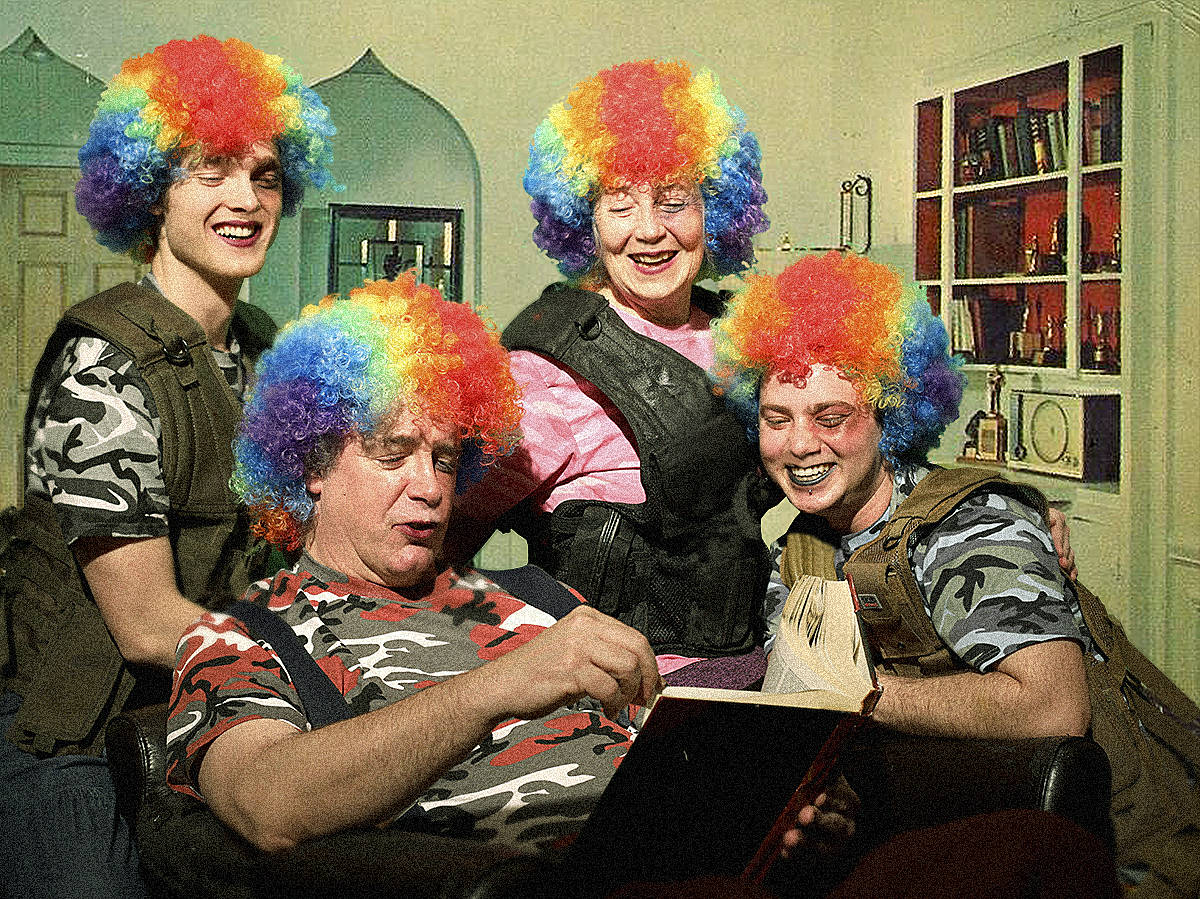Sixteen women’s voices come together as one and declare “The King is dead.” The fate of the English empire has pivoted with the sudden death of King Henry V; political stability is lost and internal familial conflicts erupt. With quick and specific movements that echo the urgency and rhythms of warriors preparing for battle, the body of the dead King is wrapped in cloth. Young Henry VI is swiftly crowned King. As they fight for power in the wake of the king’s death, two rival royal houses, Lancaster and York, deal in deception, murder, and betrayal.
In William Shakespeare’s time, his epic three-part historical trilogy would’ve been performed entirely by men, but four centuries later in Seattle, the opposite is true. The Seattle Shakespeare Company and upstart crow collective have collaborated to produce Bring Down the House, a striking two-part adaptation of Shakespeare’s Henry VI trilogy with an all-female cast. (Part II opens Saturday.) The work of movement director Alice Gosti, the visionary directing of Rosa Joshi, and the abstract scenic design of Shawn Ketchum Johnson weave together to produce a piece of reimagined classic theater that drips with intrigue.
In one of Part I’s visually richer scenes, the characters must choose a white or red rose, representing one’s political alignment with either the York or Lancaster nobility. York (Mari Nelson) waltzes over to pluck a white rose from the hand of ensemble member Emma Bjornson, whose body is wrapped around the slanted black poles surrounding the theater space along with the arms, legs, and waists of the other ensemble members, creating enchanting shapes through movement and design. Somerset (Dedra D. Woods) stands in opposition to York and picks a red rose. The tableaux is a testament to the excellence of Gosti’s attention to detail and Joshi’s imaginative staging. Skewed at various angles toward the ceiling, the black poles compliment the colorful pop of red and white roses, enriched by Johnson’s dark, abstract, and wholly effective scenic design. Lighting is thrown onto the set’s jagged structure, casting eerie shadows upon the ground. The moment pulls audience members into a space of political intensity that feels something like a Game of Thrones episode.
As it was 400 years ago, Shakespeare’s plays are still often cast with disproportionately more cisgender men than folks of any other gender, which can prove deeply frustrating for female/femme actors who want to perform classical works. Opportunities for fierce femmes to collaborate in the theater are deeply needed. Upstart crow collective’s willingness to break gender codes evidences the revolutionary potential of more inclusive casting. The mastery of dominant, egotistic, war-driven characters by Nelson, Woods, and many other actors in Bring Down the House destabilizes the widely held belief that male-assigned folks are “born with” more aggressive behaviors than women; these female actors more than convincingly embody aggressive leadership styles. Since this behavior can in fact be performed, Bring Down the House naturally prompts the audience to question their own gendered assumptions around power, control, and leadership—an explicit goal of Joshi’s for the production.
Seeing an all-female production of a Shakespeare play carries a kind of magic that straight Shakespeare plays lack. The gut-wrenching cries of Eleanor (Sunam Ellis), the powerful strength of Warwick (Nike Imoru), and the seductive masculine energy of Suffolk (Kate Sumpter) speak to the deep need and sacred power of theater that gives opportunities to femme actors in Seattle. Bring Down the House is proof that when female actors have the chance to collaborate, it benefits the entire Seattle theater community, raising the standard of production to a bold new level. Bring Down the House (Part I), Center Theater at Seattle Center, upstartcrowcollective.com. $31–$50. Ends Sun., March 12.
stage@seattleweekly.com








